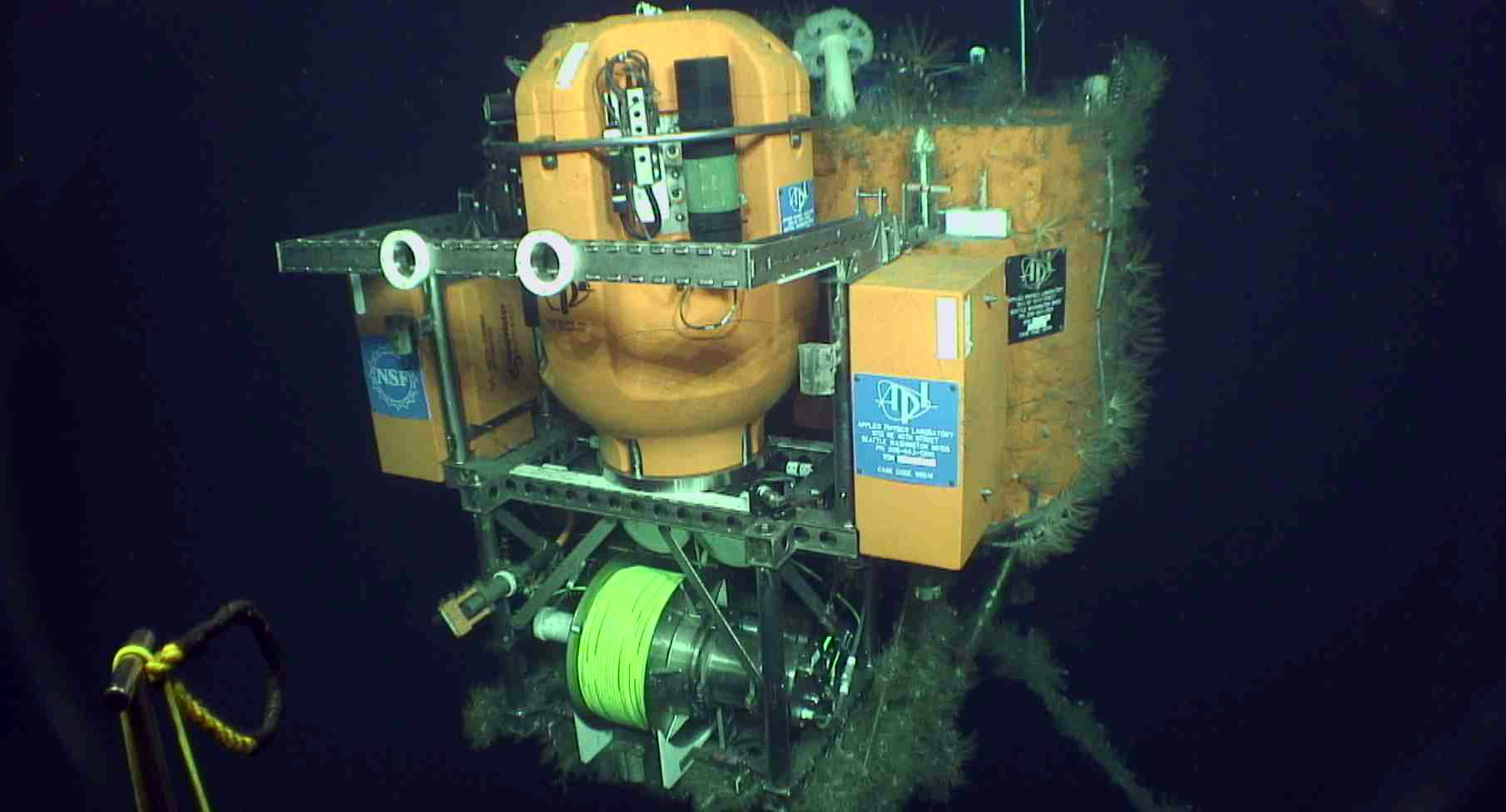The Slope Base – Cascadia Margin site is located ~125 km west of Newport, Oregon (OR), adjacent to the continental slope at a water depth of approximately 2,900 m. Here, RCA geophysical sensors focus on detection of seismic and tsunami events associated with earthquakes along the Cascadia Subduction Zone and within the accretionary prism. Shallow Profiler and Deep Profiler moorings with a complementary set of seafloor sensors are directed at understanding processes associated with climate change, ocean and ecosystem dynamics, biogeochemical cycles, and topographic forcing effects in an area impacted by the eastern boundary California Current.

Photo Credit: NSF-OOI/UW/CSSF; Dive R1757; V14
The coastal region of the Pacific Northwest is a classic wind-driven upwelling system where nutrient-rich deep waters rise to replace warmer surface waters. The result is a large increase in marine productivity that ranges from phytoplankton to fish to marine mammals. Near bottom fauna are periodically negatively impacted by flow of deep waters with very low oxygen concentrations (hypoxia events), and upwelling of acidified, low-oxygen waters onto the continental shelf.
Coupled with other Cabled and Endurance Array installations off the central Oregon coast, the Slope Base site provides a wide variety of opportunities for seismic and coastal studies, including cross-shelf and along-shelf variability.
Water column sensors are deployed on 1) moorings with instrumented wire-following profilers, and 2) two-legged moorings that provide 3 kW power and 1 GB communication to 200-m deep instrumented platforms, and instrumented winched profilers.

These provide key insights into a region that is strongly forced by air-sea interaction, shelf-slope interactions with the deep sea, and coupled atmospheric/oceanic phenomena acting to produce variations in North Pacific circulation over gyre scales. On the seafloor next to these moorings are complementary sensors that enable interdisciplinary observations of water-column processes which span the continental margin to across the shelf.













































